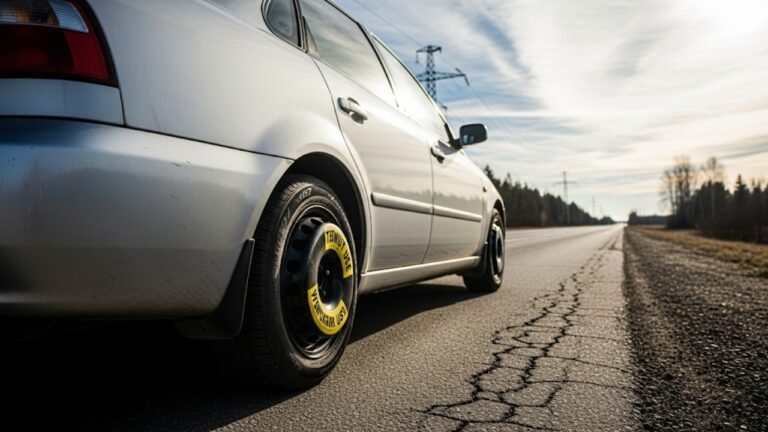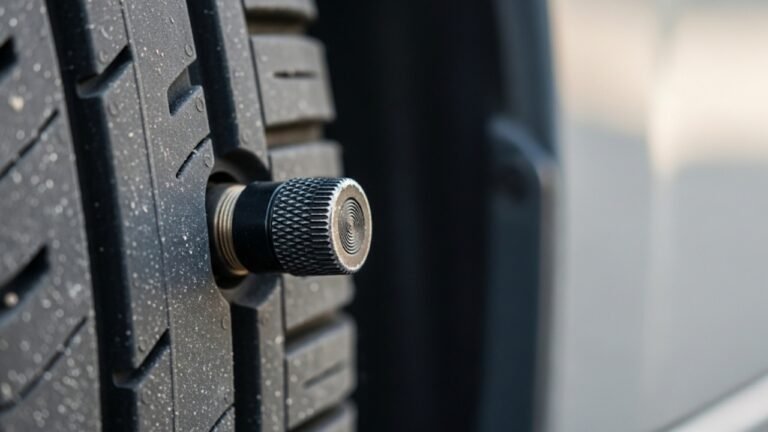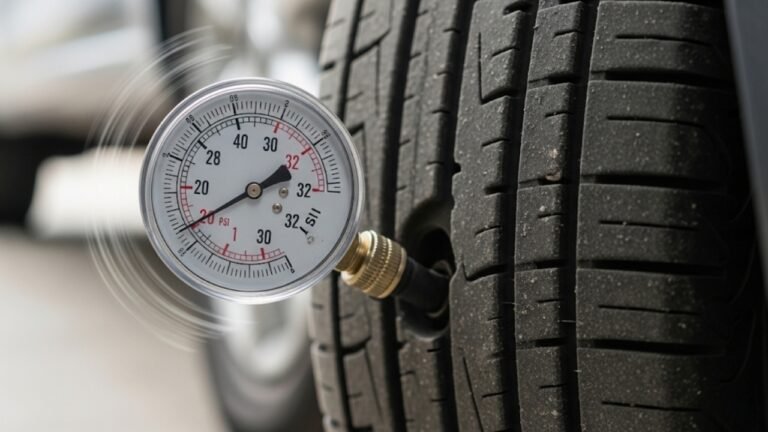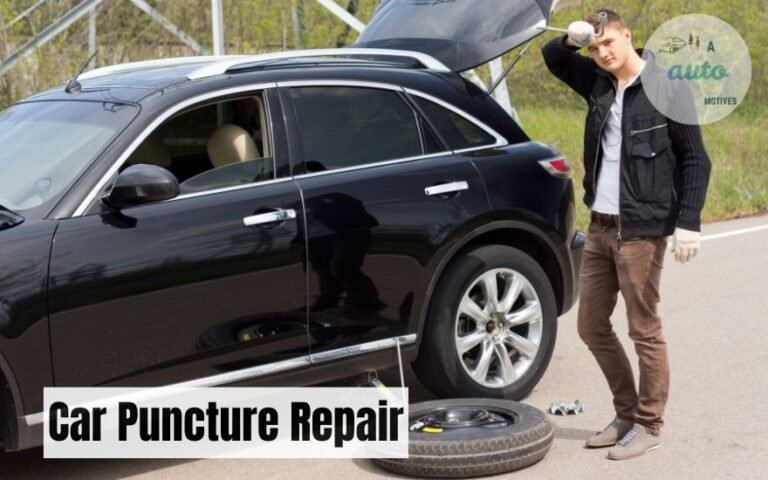When You Accelerate, the Size of the Front Tire
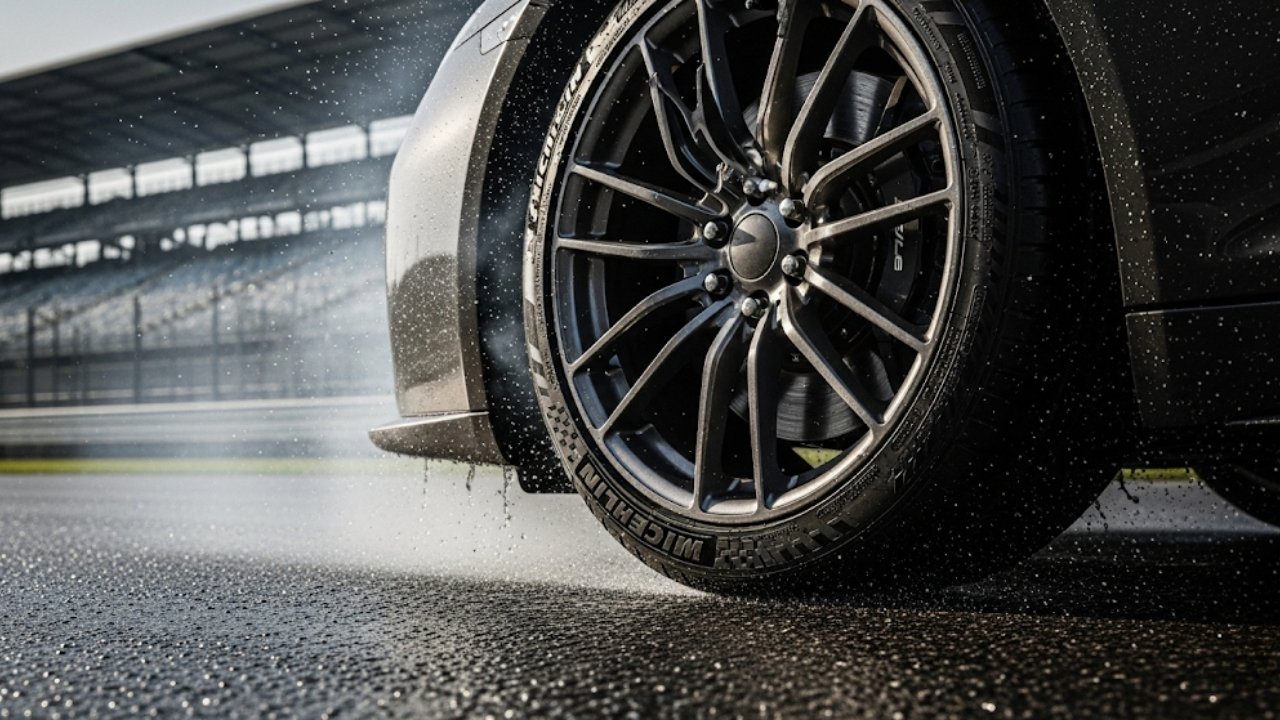
Ever felt that slight shift in your car’s behavior when you hit the gas pedal hard? Maybe the steering feels lighter, or the front end seems to rise slightly. It’s not your imagination. What’s happening beneath the surface—literally—is the change in the contact patch of your tires.
The contact patch is the part of your tire that’s actually touching the road. It’s about the size of your hand. Tiny, right? But it’s where all the magic happens: grip, braking, acceleration, and steering all depend on it.
Now here’s the kicker—when you accelerate, the size of the front tire patch becomes smaller. This may seem trivial at first, but it can change how your car behaves, especially at high speeds or in emergency maneuvers.
In this guide, I’ll explain what a tire patch is, how acceleration affects it, why it matters, and what you can do to stay safer and more in control. We’ll even look at some cool physics, relatable real-life experiences, and clear takeaways.
The Basics: What Is a Tire Contact Patch?
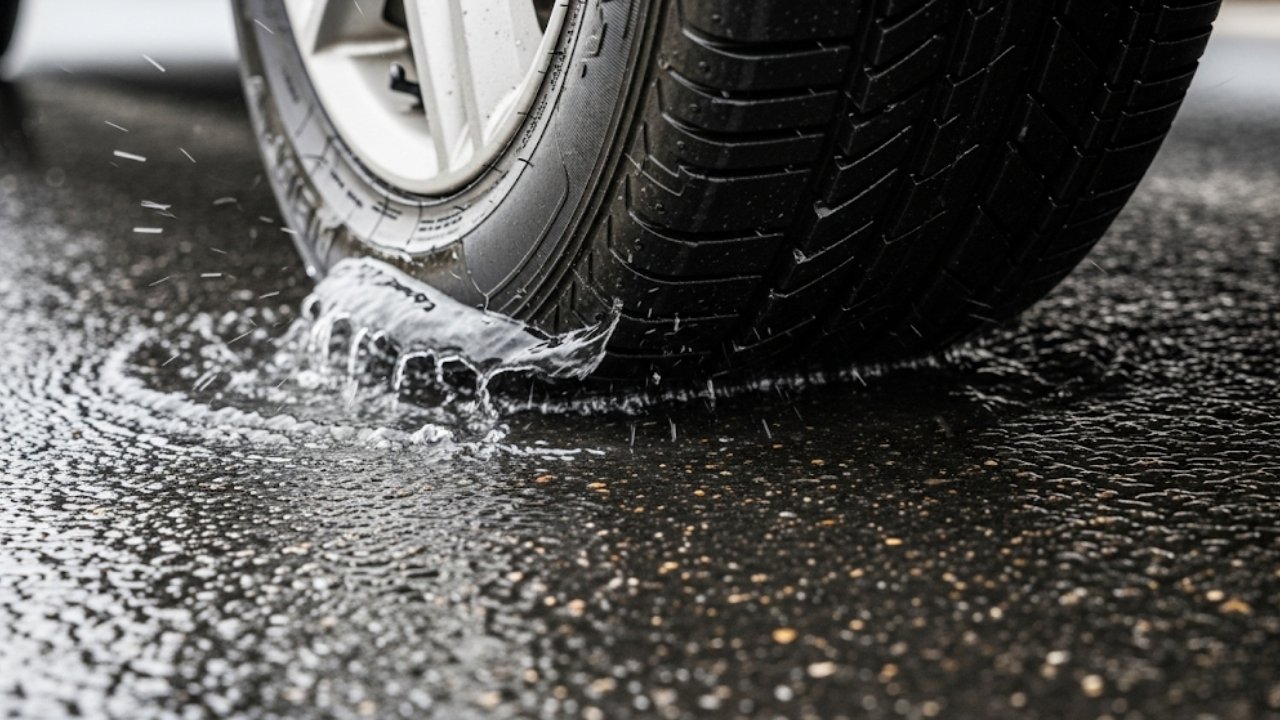
The tire contact patch is the part of the tire that’s in direct contact with the road. Think of it as the only real bridge between your vehicle and the ground.
Key functions of the contact patch:
-
Transfers power from the engine to the road.
-
Absorbs forces during cornering.
-
Provides grip for acceleration and braking.
-
Balances the car’s weight across four tires.
Interesting fact:
Even though your car weighs thousands of pounds, each contact patch is only about the size of a postcard or a handprint. That means all that weight and force is carried through just a few inches of rubber. Pretty wild, right?
Here’s a simple table to show contact patch size by tire type:
| Tire Type | Average Contact Patch Size |
|---|---|
| Compact Car Tire | 20–25 square inches |
| Sedan Tire | 25–30 square inches |
| Performance Tire | 35–40 square inches |
| SUV/Truck Tire | 40–50 square inches |
What Happens to the Contact Patch When You Accelerate?
Now, let’s answer the main question: “When you accelerate, the size of the front tire patch becomes…” smaller.
Yes, that’s right. As you step on the gas, especially hard, the front of your car tends to lift slightly. This causes weight transfer to the rear wheels.
Think of it like this: imagine a kid on a seesaw. When one side goes down, the other rises. The same thing happens in your car.
Here’s why the front contact patch shrinks:
-
Acceleration shifts weight rearward.
-
Front suspension lifts slightly.
-
Less weight on front tires = less compression = smaller contact patch.
This change in size affects your steering response, grip, and even braking ability in the front tires. It’s why sometimes, during a hard launch or high-speed acceleration, the steering may feel vague or less responsive.
Why This Matters: Real-World Impact of a Smaller Front Tire Patch
Let me share a little story to illustrate.
A friend of mine, Jake, was driving his old Mustang on a curvy road. He hit the gas hard out of a tight corner. Suddenly, the front end felt like it floated, and the steering lost precision. What happened? You guessed it—when you accelerate, the size of the front tire patch becomes too small, reducing grip.
Jake almost understeered off the road. Luckily, he backed off the throttle just in time.
Here’s what a smaller front contact patch can lead to:
-
Decreased steering accuracy.
-
Increased understeer (the car doesn’t turn as much as you want).
-
Longer stopping distances (less grip up front).
-
More tire wear in the rear, as they take on more of the load.
The Physics Behind the Shift: A Friendly Explanation
I know “physics” can sound intimidating. But let’s simplify it.
Your car’s weight isn’t evenly distributed all the time. It shifts around depending on what you do—brake, turn, or accelerate.
When you accelerate:
-
Inertia pushes the car’s weight backward.
-
The rear tires press harder into the road.
-
The front tires lift slightly, reducing pressure.
-
As pressure reduces, the contact area reduces too.
This change in force affects how much friction the tire can produce. Less friction up front means less control.
Imagine holding a basketball lightly on the floor. Now press it down hard. See how it flattens? That’s more contact. When you press it less, the flat part shrinks. That’s what your tires do—only it happens in milliseconds.
How Your Driving Style Affects Tire Patch Size
Not everyone accelerates the same. And how you use the throttle can affect how much the front tire patch changes.
Aggressive drivers:
-
Hit the gas hard.
-
Experience major weight shift.
-
Reduce front patch size quickly.
Smooth drivers:
-
Gradually accelerate.
-
Minimize weight transfer.
-
Keep front tire patch more stable.
So, when you think about it, your driving habits directly affect how much road your tires are touching. That’s a pretty personal relationship with your car, right?
Tires, Suspension, and Vehicle Setup: How They Influence the Patch
Tire patch behavior also depends on your car’s setup.
Let’s break it down:
Tire Pressure
-
Overinflated tires = smaller contact patch.
-
Underinflated tires = larger patch, but unstable.
-
Proper inflation ensures ideal patch size during acceleration.
Suspension Stiffness
-
Soft front suspension allows more lift, reducing contact patch more.
-
Stiffer suspension keeps front end planted better.
Weight Distribution
-
Front-heavy cars (like most sedans) lose more front patch under throttle.
-
Rear-heavy or mid-engine cars manage weight transfer better.
Driving in Different Conditions: Wet Roads, Snow, and Hot Asphalt
The size of your tire patch becomes even more critical in challenging conditions.
On wet roads:
-
Smaller contact patches can’t push water away as effectively.
-
Hydroplaning risk increases.
On snowy roads:
-
Less contact = less traction, which you need for control.
-
Slipping becomes more common.
On hot days:
-
Tire rubber softens.
-
More grip, but patch can deform under heavy load.
So yeah, the weather isn’t just for small talk—it seriously affects how your tire patch works under acceleration.
How to Manage the Tire Patch for Better Control and Safety
Now that we know what happens when you accelerate and why the front tire patch shrinks, let’s talk solutions. You don’t need to be a race car driver to manage your grip smartly.
Here’s how you can help your car stay balanced:
-
Ease onto the throttle instead of slamming it.
-
Maintain proper tire pressure based on your owner’s manual.
-
Avoid heavy acceleration when turning—do one thing at a time.
-
Don’t overload the front or rear of your vehicle with cargo.
One trick I learned on a road trip through the Rockies was to accelerate only after I straightened the wheel. That little habit helped keep my front tires planted, especially around sharp corners where grip was critical.
The Role of Tire Design and Compound
Not all tires behave the same. Some are built to maintain a larger contact patch under stress, while others shrink more noticeably.
Let’s break down how tire technology plays a part:
Tread Design
-
Performance tires have stiffer sidewalls and wider tread blocks.
-
They resist deformation, so contact patch remains larger during acceleration.
Rubber Compound
-
Softer compounds provide better grip but may wear faster.
-
Harder rubber lasts longer but may shrink contact patch more under load.
Speed Rating
-
High-speed-rated tires are designed for stability at high G-forces.
-
Their construction helps reduce patch size loss during acceleration.
If you drive aggressively or value cornering performance, upgrading your tires can make a big difference in how your vehicle feels and reacts under pressure.
What Professional Racers Do: Learning from the Track
You know who really understands when you accelerate, the size of the front tire patch becomes critical? Race car drivers.
In motorsports, engineers constantly monitor tire pressure, suspension stiffness, and weight balance to keep that contact patch as optimal as possible.
Here’s what race teams adjust:
-
Pre-load settings in the suspension to reduce front lift.
-
Downforce setups to push the front end down during acceleration.
-
Tire heat cycles to ensure consistent performance and grip.
I once attended an amateur track day where a pro driver taught us how to feel weight transfer. “Grip lives in the patch,” he said. “Manage the patch, and you manage the car.”
It changed how I thought about driving. It wasn’t just speed—it was the dance between the tires and the road.
Bullet Point Recap: Key Takeaways
Here’s a quick summary of what we’ve learned:
-
When you accelerate, the size of the front tire patch becomes smaller due to rearward weight transfer.
-
This leads to reduced steering control and less grip.
-
Smooth driving can minimize patch loss.
-
Proper tire pressure, suspension tuning, and tread design help maintain a safe contact patch.
-
Real-life driving conditions and weather affect how tire patches behave.
-
Racing strategies can inspire better driving habits for everyday people.
Quick Reference Table: Tire Patch Effects During Acceleration
| Factor | Impact on Front Tire Patch | Result |
|---|---|---|
| Hard Acceleration | Shrinks patch | Less grip, vague steering |
| Smooth Acceleration | Minimizes shrinkage | More balanced control |
| Overinflated Tires | Smaller patch | Decreased traction |
| Underinflated Tires | Larger, unstable patch | Risk of wobble or sidewall flex |
| Stiff Front Suspension | Reduces patch loss | Better grip during throttle |
| Soft Front Suspension | Increases patch loss | Reduced control when accelerating |
Frequently Asked Questions (FAQs)
1. Why does the front contact patch shrink during acceleration?
Because of rearward weight transfer. When the rear of the vehicle bears more load, the front tires lift slightly, reducing the amount of rubber on the road.
2. Does tire size affect how much the patch changes?
Yes. Wider tires generally have larger patches and may retain more contact area, but they’re also more sensitive to weight shifts.
3. Can changing tire pressure help with patch size during acceleration?
Absolutely. Maintaining manufacturer-recommended tire pressure ensures you get the best contact patch performance under load.
4. Is this patch shrinkage dangerous?
It can be if you’re accelerating while steering or driving on slippery roads. It can lead to understeer, loss of control, or longer braking distances.
5. Do front-wheel drive (FWD) and rear-wheel drive (RWD) cars behave differently?
Yes. In FWD cars, both steering and acceleration come from the front. So when the front patch shrinks, you feel it more. RWD cars push from the back, but the front patch still matters for turning.
6. Does vehicle load affect the contact patch?
For sure. A heavy front load keeps the front patch bigger under throttle. But if you’re towing or have weight in the rear, it shifts balance even more backward.
7. Can driving techniques really change patch behavior?
Yes! Smooth throttle, avoiding mid-corner acceleration, and using good tire maintenance all help maintain a better contact patch.
8. Do tire brands differ in patch performance?
Absolutely. Brands like Michelin, Continental, and Bridgestone offer tires that are engineered for patch stability under acceleration and cornering.
Final Thoughts: Drive Smarter by Understanding the Patch
Let’s face it—we all want to feel in control when we’re behind the wheel. Whether you’re merging onto a highway or navigating a tight turn, the behavior of your tires matters more than most people realize.
When you accelerate, the size of the front tire patch becomes smaller, and that tiny change can ripple into your whole driving experience.
But now, you’re equipped. You understand what’s happening, why it matters, and how to adapt your driving and maintenance habits to keep yourself safer and more confident.
Next time you feel your front end go light during acceleration, remember: it’s not just speed you’re playing with—it’s physics, pressure, and precision.
So drive with care, check your tires often, and always respect the mighty little patch that’s holding you to the road.

